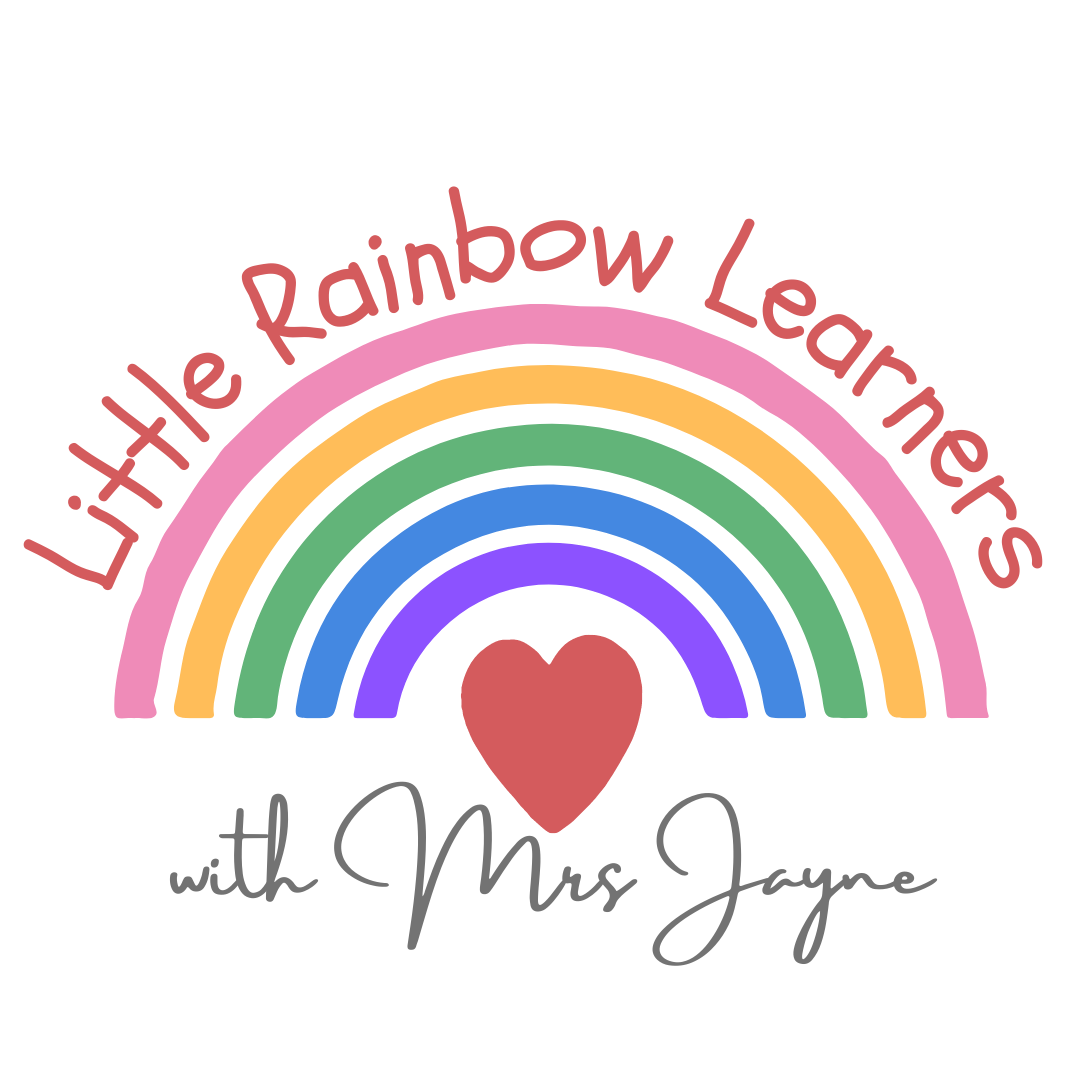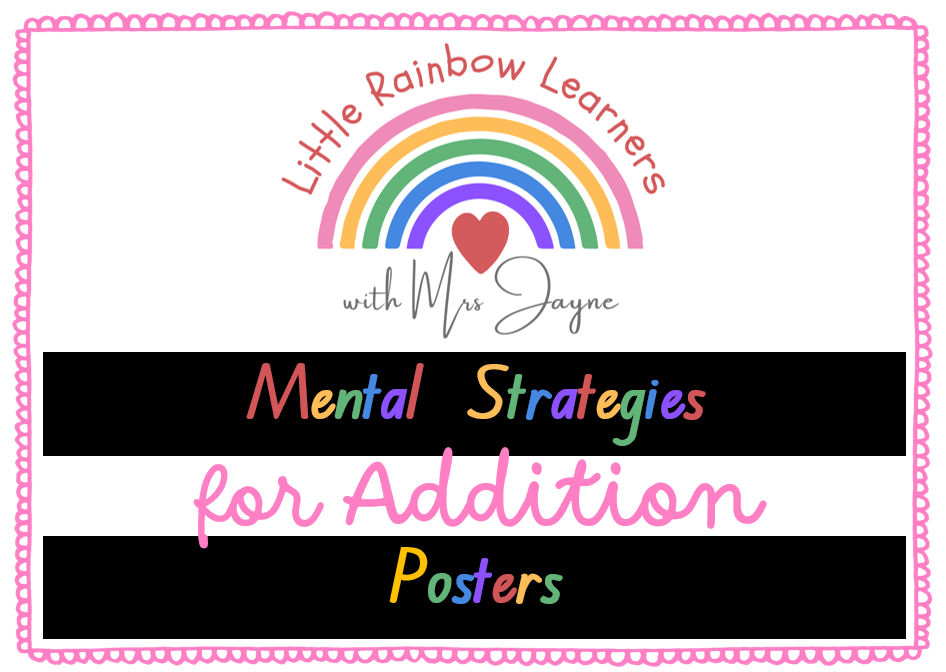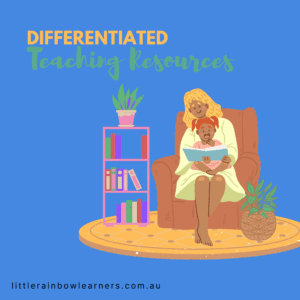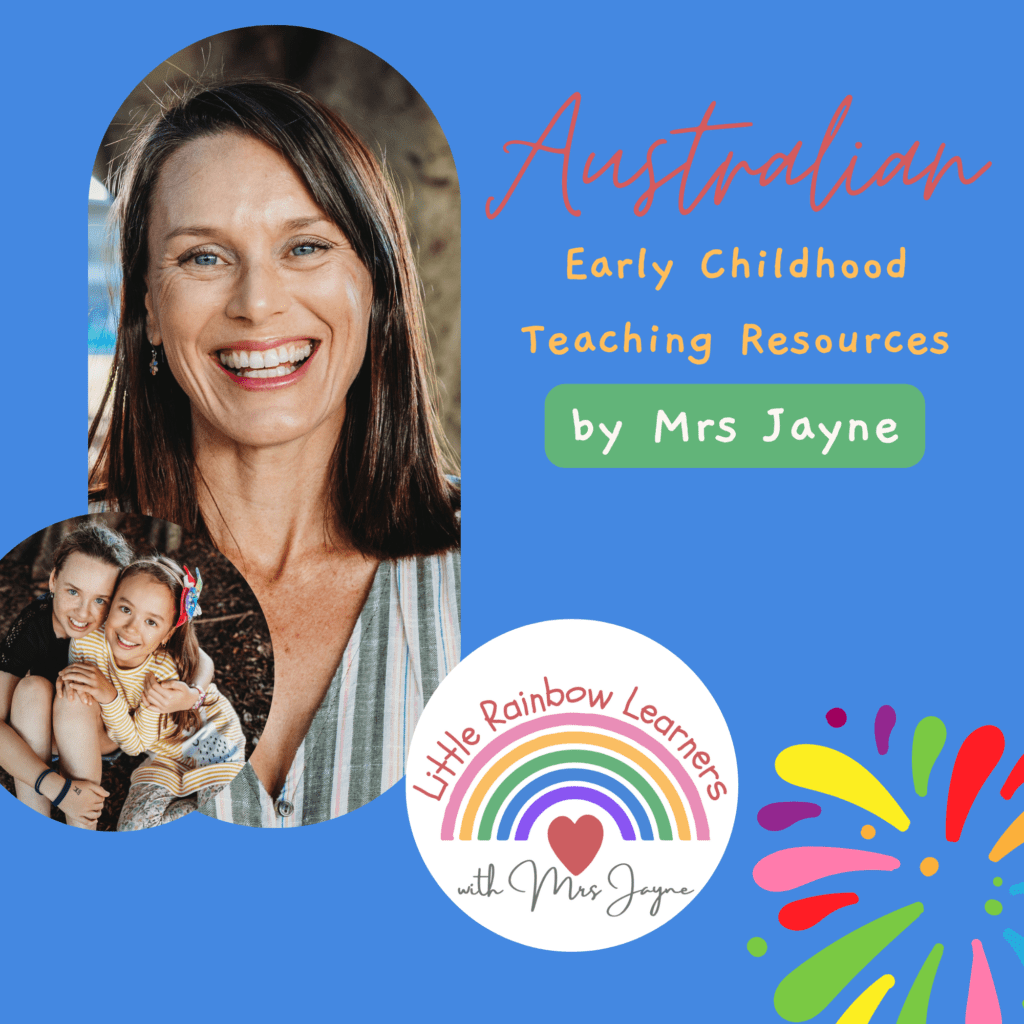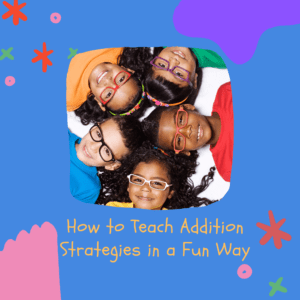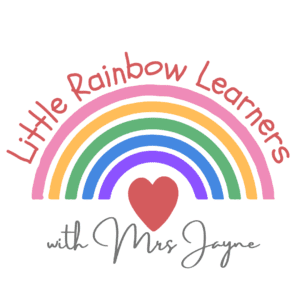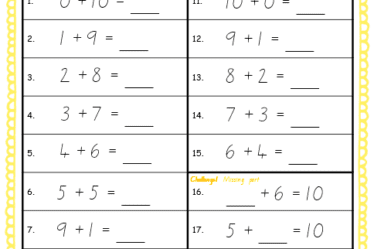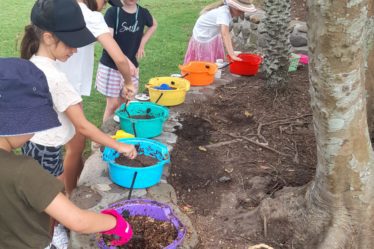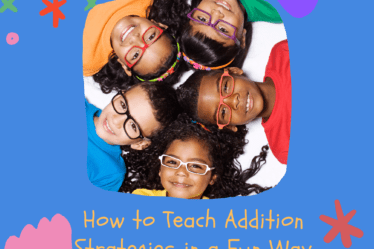
Hey there, Early Years Educators!
Let’s chat about teaching strategies for addition to Year 2 learners. I’m a firm believer that by teaching little learners a range of basic addition rules, you can set your students up for mathematical success in the Early Years … and well into the years to come!
Early years classrooms celebrate multimodal learning! Strategies for teaching addition we regularly implement allow our little rainbow learners opportunities to play, investigate and manipulate hands-on resources. We:
- experiment with ten frames and counters,
- explore MAB blocks and place value columns,
- stack and count connecting cubes,
- and play with number lines and hundreds grids.
Early Years teachers are masters at presenting mathematical:
- songs, finger rhymes and transition games,
- stories,
- card games,
- craft and art experiences,
- dice games,
- and board games,
- along with engaging worksheets
to explore and practice maths concepts.
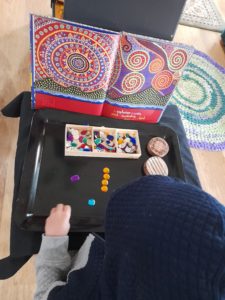
We engage children in these learning experiences as:
- a whole class,
- in small groups,
- and as independent learners.
All of these elements are as essential to our maths programs as the explicit teaching of mental addition strategies.
Explicitly teaching basic mental strategies for addition in Year 2
In Year 2, teaching strategies for addition should be a priority in your maths planning. I recommend explicitly teaching all 10 basic mental calculation strategies in term 1.
Addition strategies Year 2:
- Turnarounds
- Add zero
- Count on
- Rainbow facts
- Add ten
- Doubles
- Near doubles
- Near ten, add nine
- Near ten, add eight
- Bridging ten to teach ‘the leftover’ facts
Planning to teach addition strategies, Year 2
Assuming it’s an average-10-weeks-long term, I would keep the first 4 weeks of the year for settling in, establishing the 3R’s (Relationships, Routines and Rules) and just focussing on the content set out by
a) your state’s system
or
b) your school.
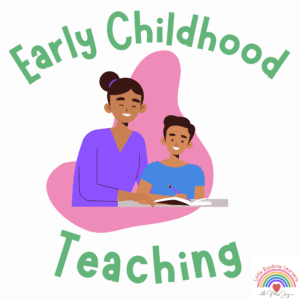
Do you work in a school that implements the National Curriculum via your state’s curriculum (for example, in Queensland, we use ‘C2C’ Curriculum Framework in state schools and catholic schools have their own ‘Diocesan Learning Framework’)? Or a school that creates its own school-based curriculum (for example, larger state schools in Queensland often have a ‘Head of Curriculum’ teacher who provides term plans for teachers to follow)? Here, I’ll call both of these planning systems “the provided curriculum”. Either way, you can fit in the explicit teaching of addition strategies to support your little learner’s mathematical progress.
I start the year by glancing over the content stipulated for term 1 in the “provided curriculum” and dropping it into a simple Word Doc table. I then insert the 10 mental addition strategies by placing 1 strategy in each week of my maths planning from weeks 1 to 10. I then look for double-ups – are any of these 10 strategies also stipulated in the provided curriculum (whether state or school based)? If so, I move the topics from the provided curriculum to match up with the same week I plan to teach the strategy.
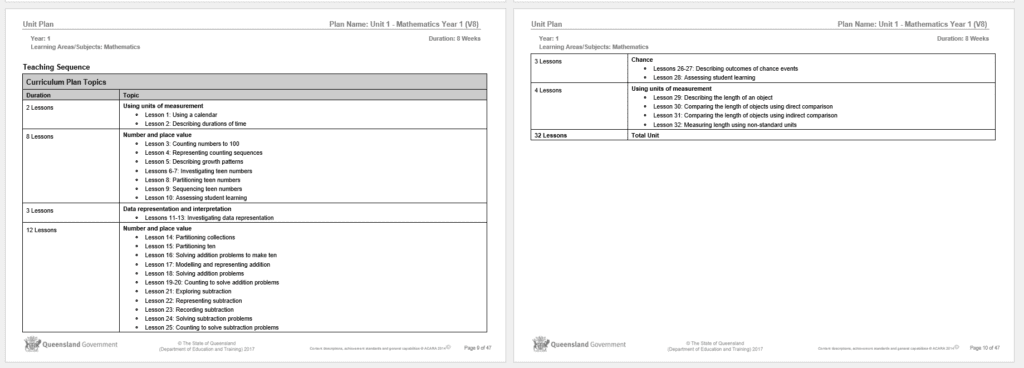
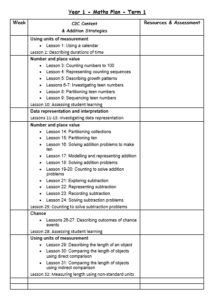
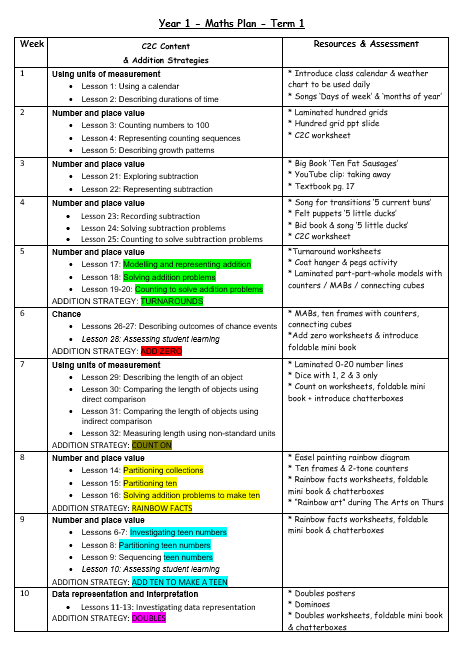
It’s important to teach the addition strategies in this set order, as they progress from easiest and most commonly used to hardest and less frequently needed. Also, many of the later strategies build on knowledge of earlier strategies. So, I find moving around topics in the provided curriculum is preferable to mixing up the order of the addition strategies.
I find moving around the topics of the provided curriculum does not disadvantage children’s learning. I just make sure to move any matching assessment tasks along with the corresponding lessons. I also rearrange maths content before the term starts to maximise cross-curriculum connections. For example, I’ll move the Foundation maths lessons about ‘comparing size’ to the same week that we’ll be reading “Goldilocks and the Three Bears” in English to make the most of big/small – bigger/smaller – biggest/smallest resources, concepts and vocabulary.
Or I’ll shift the Year 2 maths lessons about collecting and displaying data to the week we’re celebrating NAIDOC Day. We can gather data on the ‘most popular rotational activities’ by creating a simple survey to conduct with another class. We can practice recording tallies and then use our collected data to make a bar graph.
As long as all of the content in the provided curriculum has been presented by the end of the term … the more contextualised, connected and real the content is in the Early Years, the better!
As teachers, we understand the need to remain flexible – a responsive curriculum allows for sports carnivals, excursions, sick days, unexpected interruptions, spending longer on topics of great interest or slower take-up by students and reducing the amount of time spent on well-established concepts. So, I suggest you keep editing and adjusting your plan as the term progresses.
Term 1
I start each week by presenting a new addition strategy, backed up with a variety of hands-on experiences: joining stacks of connecting blocks, moving counters on ten frames, jumping along a laminated number line with a whiteboard pen, exploring with MAB blocks and making addition pictures.
I make the first half hour of our maths block on Monday an explicit lesson to introduce the ‘addition strategy of the week’. I start with an “I do” lesson where I model the strategy on the whiteboard or interactive screen with physical resources plus drawings and diagrams. I make the steps and the language of the strategy explicit by ‘thinking out loud’ as I work through addition number sentences. I model how to use the hands-on resources as well as how to visualise the resources so I’m calculating mentally.
I then move into a “we do” phase by asking learners to contribute answers, ideas and thinking as we work through more examples together. This could involve children answering questions orally, coming out to type in missing numbers displayed on the interactive screen, drawing diagrams on the classroom whiteboard or sharing their ‘think out loud’ explanations of the steps involved in the strategy.
I wrap up this first lesson with a short time to enjoy a “You do” task – most often a worksheet. This is particularly important at the start of the year, as it gives me a chance to train the children in completing the worksheet independently. I dedicate the remainder of the maths session on Monday to whatever other concept is the focus of the provided curriculum.
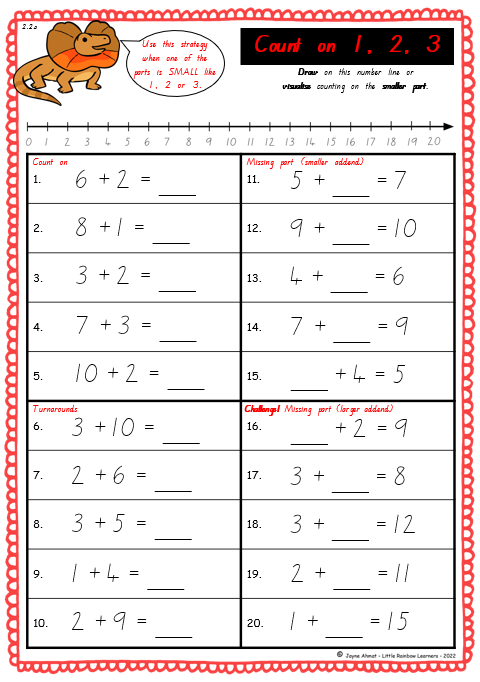
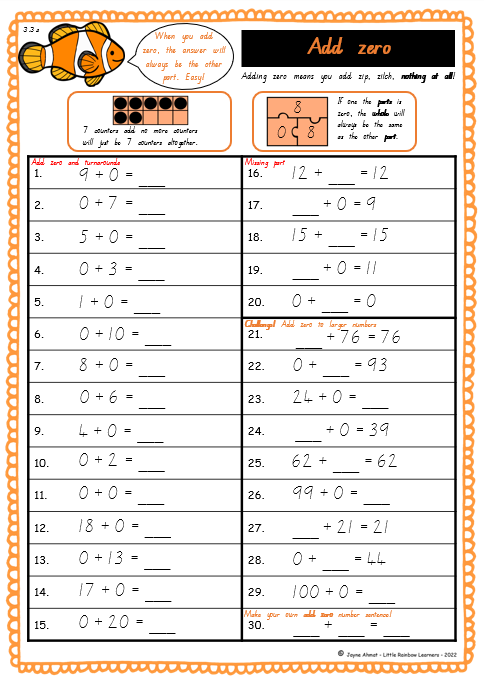
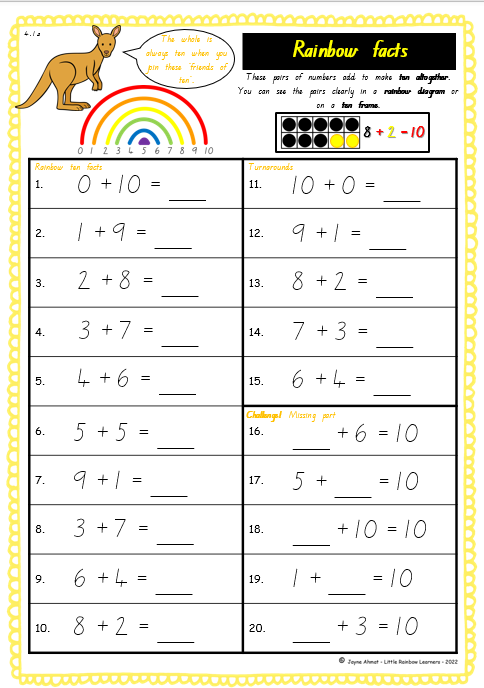
Maths groups
I always run maths groups during the week, on any 3 days from Tuesday to Friday that fit into busy class and school timetabling. I like to have students arranged into 3 ability-based groups and do one 30 min session on each of the 3 days with no rotations. In reality, this 30 min session ends up being:
- 5 mins to explain the week’s activities / for children to gather their group’s maths box / to find a space in the room to work together;
- 20 mins for working in their small work on their allocated task;
- 5 mins to tidy up at the end.
I often have a teacher aide or parent volunteer supporting 1 group, at least 1 group will be working independently and 1 group will be working with me.
Term 2
In term 2, I follow the same general procedure for setting out my term plan. I combine the provided curriculum with weekly attention to each of the 10 basic strategies, in the same order as term 1, but this time … with a focus on reversing the strategy so we learn to use it as a subtraction strategy.
The revision of each addition strategy reinforces concepts covered in term 1, while flipping each strategy to be used as a subtraction strategy extends little learner’s thinking into fact families and the connectedness between addition and subtraction. In this way, subtraction is not a novel concept to learn, or a new list of facts to memorise, but is merely a natural extension, unfolding and adaptation of the addition strategies already established.
So …
- the “turnaround” addition strategy becomes playing with part-part-whole models to create pairs of subtraction facts and fact families with 2 subtraction facts and 2 addition facts;
- the “count on 1, 2 or 3” strategy for adding a small part becomes count back 1, 2 or 3;
- the “add zero” strategy allows exploration of ‘taking away zero means subtracting nothing, the whole remains the same’;
- the “rainbow facts” addition strategy lends itself beautifully to exploring number combinations that the whole ‘10’ can be partitioned into;
- the “add 10 to make a teen” strategy is explored as taking 10 from a teen number to leave a single digit part, or taking the single digit part to leave 10. Lots of investigation into tens-and-ones place value, ten more / ten less and 2 digit numbers springs from here;
- the “doubles” addition strategy is flipped to create awareness of halves subtraction concepts – “if you know the doubles, you know the halves as well!”;
- the “near doubles” strategy becomes ‘near halves’ – “think of the closest half fact you know and adjust from there”;
- the “near ten, add nine” addition strategy is reversed to subtract 9 by thinking “subtract 10 then put back one”;
- the “near ten, add eight” strategy is flipped to subtract 8 by thinking “subtract 10 then put back two”;
- and the “remaining facts” can be calculated mentally by partitioning the part being subtracted to ‘bridge 10’ and then subtracting the remaining partitioned part.
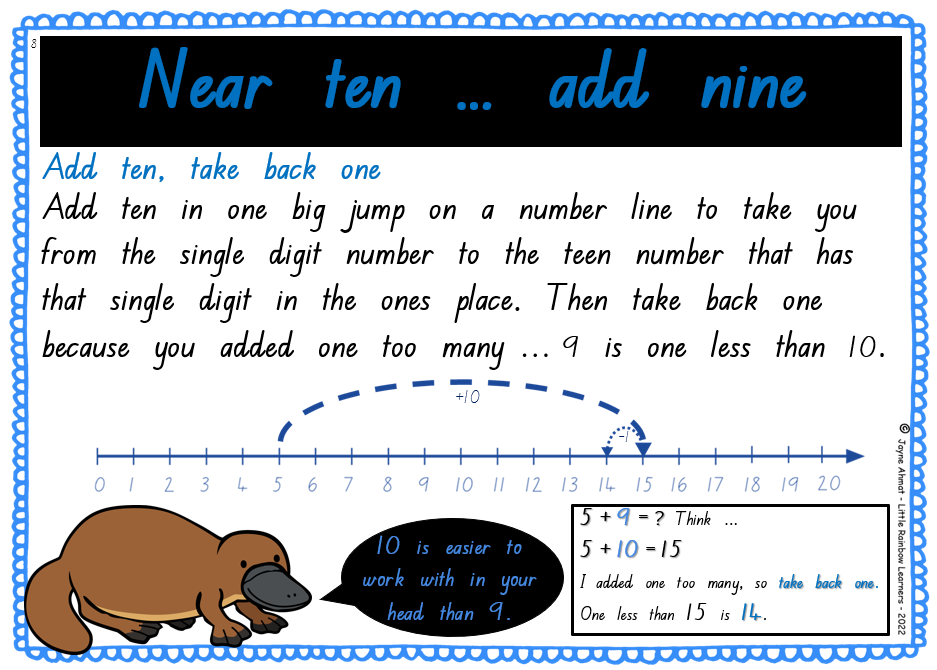
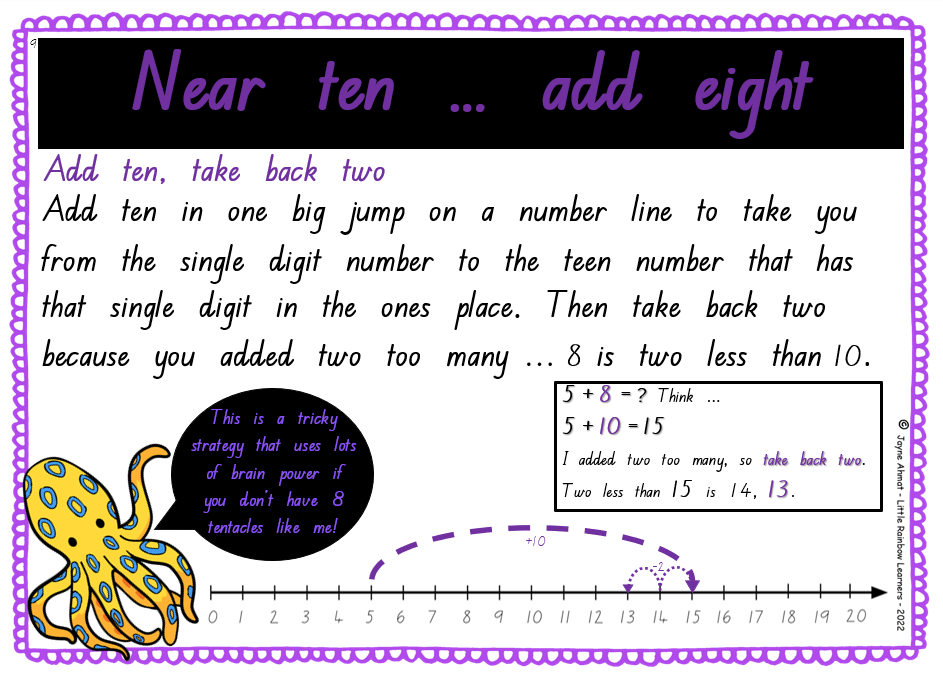
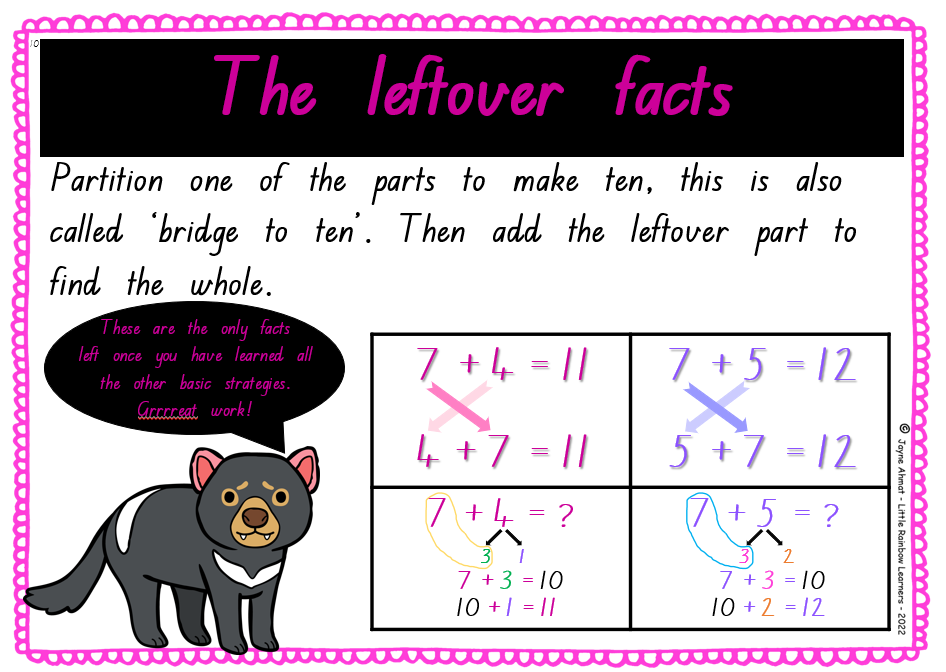
Terms 3 and 4
I use the second half of the year to continue practising, revising and applying these 10 core strategies as methods of mental calculation for both addition and subtraction, all the while moving gradually away from reliance on hands-on materials into the zone of visualisation, mental computation and eventual recall of basic facts.
Games, hands-on resources, fact family worksheets, chatterboxes, foldable mini books provide lots of time for revision and repetition for the little learners who need to continue practising the basic addition strategies in small groups.
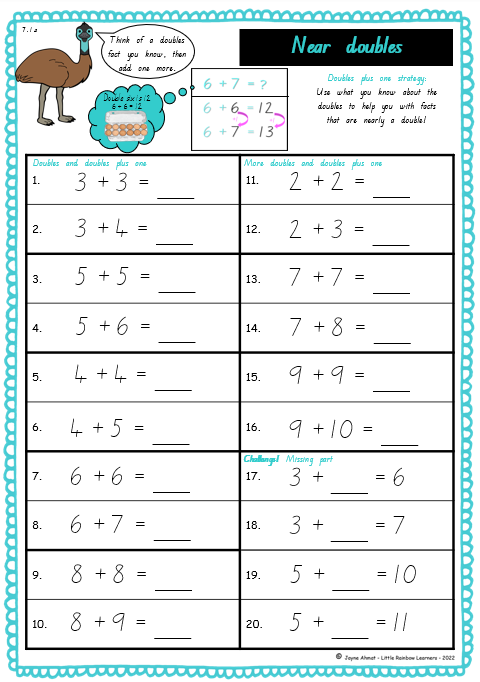
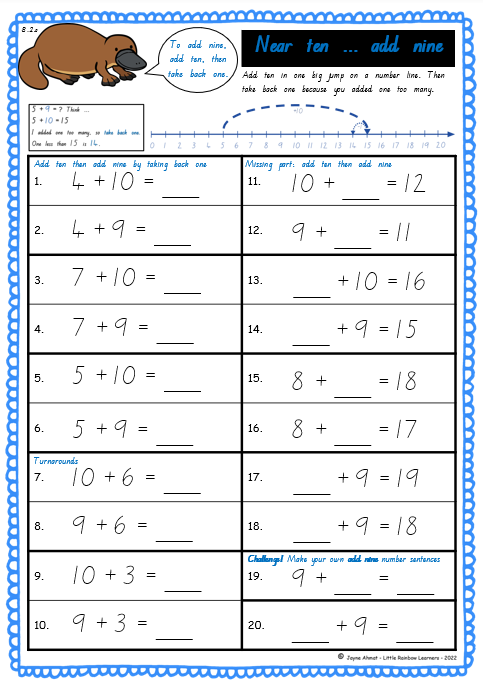
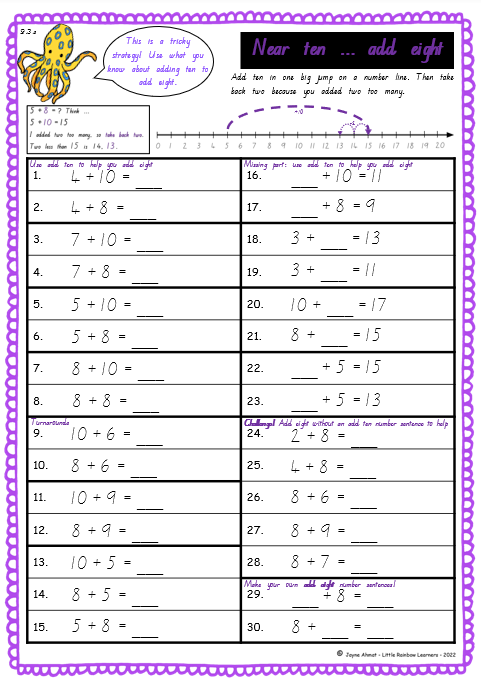
For rainbow learners ready for more challenge, the basic addition strategies can be extended . For example:
- the basic ‘doubling of ones’ leads to the fancy-pants trick of doubling tens (4 + 4 = 8, so 40 + 40 = 80);
- rainbow ten facts can be explored as ‘rainbow hundreds’ (if 3 + 7 = 10, then 3 tens (30) + 7 tens (70) = 10 tens (100)) AND as ‘rainbow twenty’ facts (is 3 + 7 = 10, then 3 + 17 = 20);
- counting on doesn’t just work well for addition facts up to 20. You can count on 1, 2 or 3 when the larger part is a 2- or even 3-digit number! Now, 76 + 2 or 3 + 124 become manageable to manipulate mentally!
- Counting on 1, 2 or 3 ones can be applied to counting on 1, 2 or 3 tens too! You can easily start at 56 and count on 2, so have a go at starting at 56 and count on 2 tens: 56 … 66, 76. Hundreds grids help children counting on in tens.
Terms 3 and 4 are also perfect for applying the basic strategies to everyday situations …
We have 23 friends on the roll, but 2 are away. How many friends are here today? How did you work that out? That’s right, 2 is a small number, so counting back is a great mental strategy to use! Start at 23, visualise a number line in your head and count back 2. 23 … 22, 21.
and word problems …
Kate has 10 friends coming to her party. She has already made 4 party bags. How many more does she need to get ready? How did you know it was 6? Yes, because 4 and 6 always make 10 – they are pairs in the rainbow diagram.
Nearly all little learners find subtraction more difficult than addition. So the second half of the year allows more time to continue engaging with subtraction concepts, build fact families and use what we know about addition to help us solve subtraction problems. Lots of work with part-part-whole models and hands-on resources will support their learning.
What the Australian Curriculum Version 9 says about teaching addition strategies in Year 2:
The same six beginner strategies that are recommended to teach in Year 1 are consolidated in Year 2 and the last few, more challenging, mental strategies are now explicitly taught. All strategies now begin to be applied to solving more complex 2 digit addition problems supported by physical materials, mathematical jottings and number sentences.
The Year 2 Year Level Description from the National Curriculum v9 uses encouraging language such as:
- partition and combine numbers flexibly, recognising and describing the relationship between addition and subtraction and employing part part whole reasoning and relational thinking to solve additive problems;
- use number sentences to formulate additive situations;
- use mathematical modelling to solve practical problems involving authentic situations by representing problems with physical and virtual materials, diagrams, and using different calculation strategies to find solutions;
- compare and contrast related operations and use known addition and subtraction facts to develop strategies for unfamiliar calculations.
The Year 2 Achievement Standard from the National Curriculum v9 states students:
- use mathematical modelling to solve practical additive … problems, including … representing the situation and choosing calculation strategies;
- identify and represent part-whole relationships;
- recall and demonstrate proficiency with addition and subtraction facts within 20.
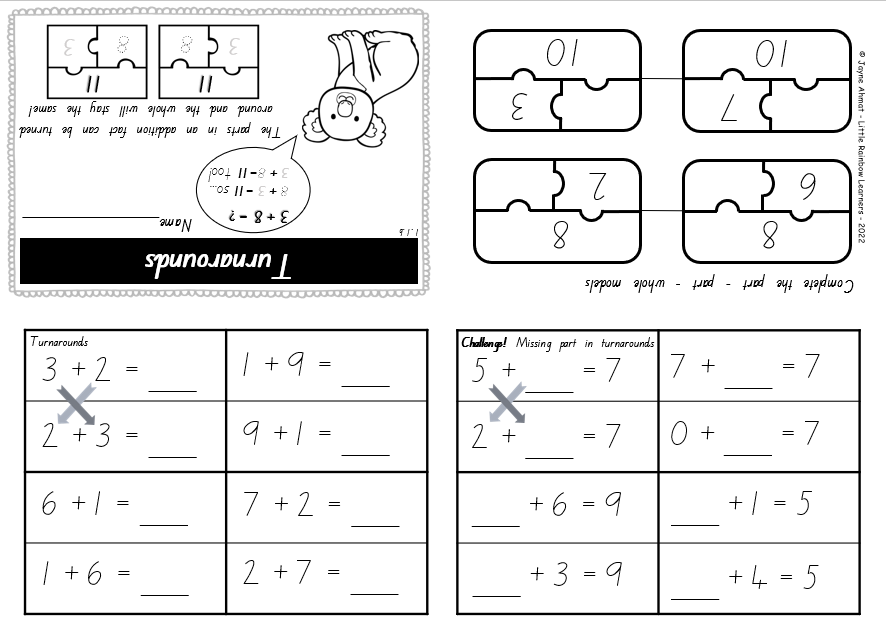
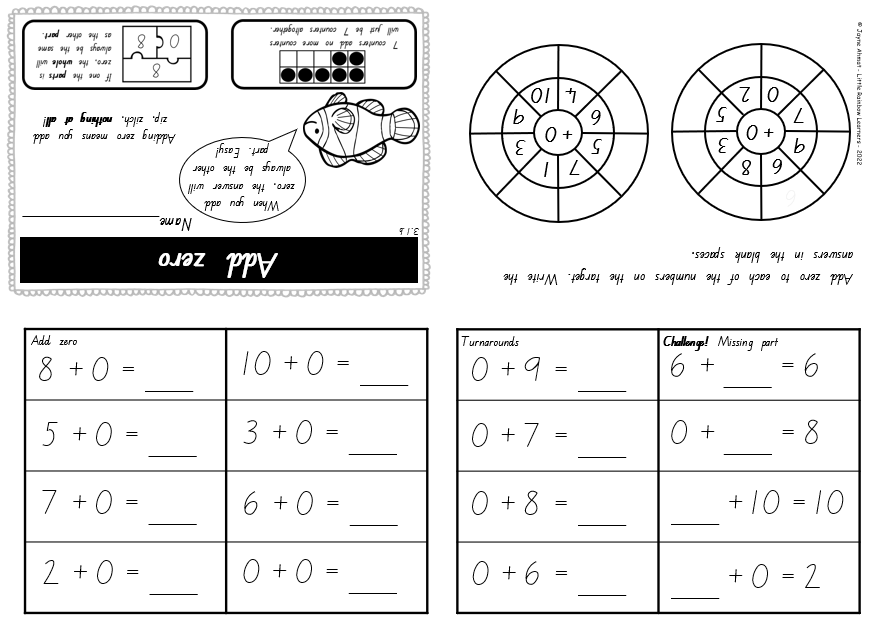
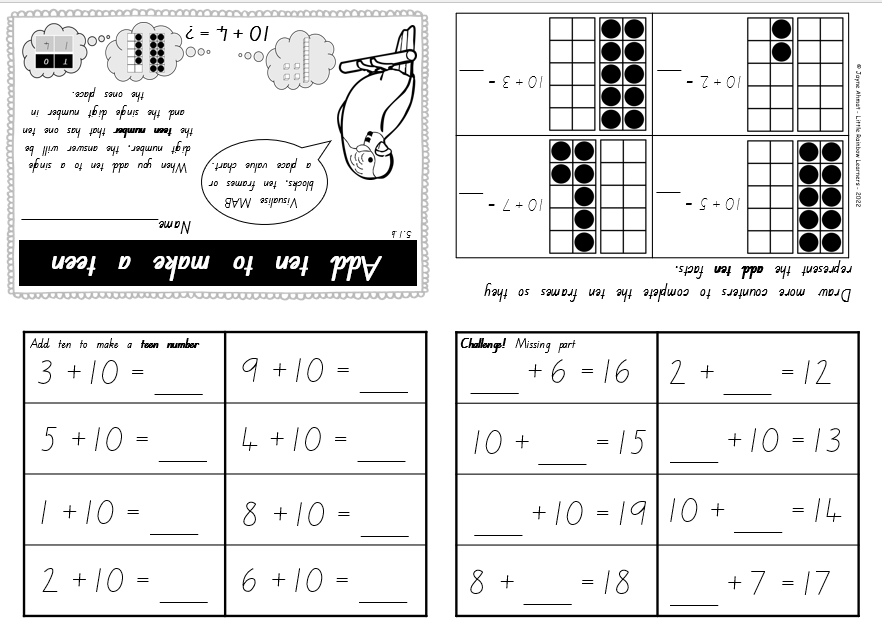
The Year 2 Achievement Standard stipulates that students will be able to choose calculation strategies. How can we expect them to choose a strategy unless we have intentionally exposed them to a collection of effective mental strategies? In Year 2, explicit teaching of all 10 strategies to the whole class is recommended.
In this year level, learners are also expected to be recalling, developing fluency and demonstrating proficiency with addition facts with answers to 20. When we use a strategy-based approach to teaching addition, any facts that have not been committed to memory for recall can be quickly and efficiently calculated mentally … if we have equipped our little learners with a tool kit full of basic addition strategies.
Content Descriptions from the National Curriculum v9 that specifically address the use of addition strategies in Year 2 are:
AC9M2N04
Add and subtract one- and two-digit numbers, representing problems using number sentences, and solve using part part whole reasoning and a variety of calculation strategies.
AC9M2A02
Recall and demonstrate proficiency with addition facts to 20; extend and apply facts to develop related subtraction facts.
AC9M2A03
Recall and demonstrate proficiency with multiplication facts for twos; extend and apply facts to develop the related division facts using doubling and halving.
In summary, the National Curriculum states knowledge and skills expected in the second year of schooling are:
- understanding the relationship between addition and subtraction;
- writing number sentences;
- part-part-whole reasoning;
- modelling to solve problems;
- choosing strategies;
- fluency in doubling and halving collections and numbers;
- recalling addition facts to 20.
Mental addition strategies specifically mentioned in the Elaborations of the Content Descriptions in the Year 2 curriculum are:
- the associative property (turnarounds);
- using a physical or mental number line (counting on);
- doubles;
- near doubles;
- combinations to 10 (rainbow facts);
- bridging to 10.
Visit the Australian National Curriculum Year 2 Maths page here: F-10 Curriculum | Mathematics – Year 2 (australiancurriculum.edu.au)
By teaching each of these mental addition strategies … and then rounding out your program with a few extra strategies … your little learners will know – or be able to work out – every possible combination of parts to 10 and a whole to 20, as shown in this colour coded addition grid.
The colours used in the addition grid match to the colour-coded addition strategy resources available for purchase in my Teachers Pay Teachers store, Little Rainbow Learners.
Related Articles:
Read an informative research paper about the importance of developing mental strategies rather than relying on counting to solve addition, published by Australia’s Monash University, here: The Development of Addition and Subtractions Strategies for Children in Kindergarten to Grade 6: Insights and Implications
Check out Lucky Little Learners’ strategy-based-approach to addition here: 14 Strategies for Teaching Addition
Read Teaching Trove’s take on developing early learner’s number fact fluency here: Addition Strategies to Increase Fact Fluency
Need a set of addition strategy posters to display in your classroom?
I’ve got you! Click here to preview my set of Australian animal / rainbow themed addition strategy posters in my Teachers Pay Teachers store ‘Little Rainbow Learners’!
